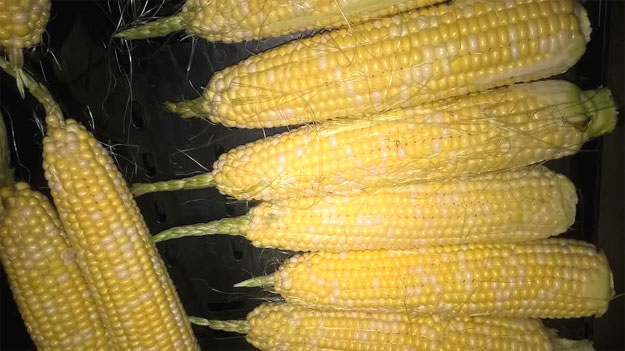There are two defects of corn that have to do with development. The first, being fairly well filled. A requirement of the U.S. Fancy and U.S. No. 1 Grades,“Fairly well filled” means that the rows of kernels show fairly uniform development, and that the appearance and quality of the edible portion of the ear are not materially affected by poorly developed rows. When the ear has not been clipped, not more than one-fourth of the length of the cob may have poorly developed or missing kernels at the tip. When the ear has been clipped, it shall have practically no poorly developed kernels at the tip of the cob. Missing or poorly developed kernels on other parts of the ear shall not aggregate more than one square inch (6.5 cm) on a cob 6 inches (152.4 mm) in length, and a proportionally greater area shall be permitted on a longer cob and a proportionally lesser area on a shorter cob.
The second defect, not well developed, has more to do with the shape of the ears. The U.S. Fancy, U.S. Fancy Husked, U.S. No. 1, and U.S. No. 1 Husked grades require that the ears be well developed. This means that the ears must be fairly straight and not stunted. Therefore, ears which are badly bent, crooked, irregular shaped, stunted, or otherwise ill formed are scored as defects against the total tolerances for the grade. This defect shall be reported as not well developed.

So when an inspector came across these ears of corn the question was posed. We all agree most of the ears are defective, but what should it be called? I would say the defect is caused by poor pollination, where not only did the kernels not develop properly, the ears themselves did not develop properly. If we call this defect “not well developed,” then scoring or not scoring this as a defect is a judgement call. If we decide to call this defect “poorly filled,” then a scoring guideline is given. Not more than 1/4 of the length of the cob may have missing kernels at the tip of the ear. If these are 8 inch ears, then 2 inches of this defect would be allowed on each and every ear.
I lean to calling this defect “not well developed,” and would score all ears shown here as defects. Fortunately the QC’s I work with involving retailers and wholesalers almost always back up their rejections with pictures of the defect, helping the supplier see what is being scored.
If anyone can provide more information on the cause of this defect feel free to comment and I will share on this post.

No Comments on “Corn- Well Developed”